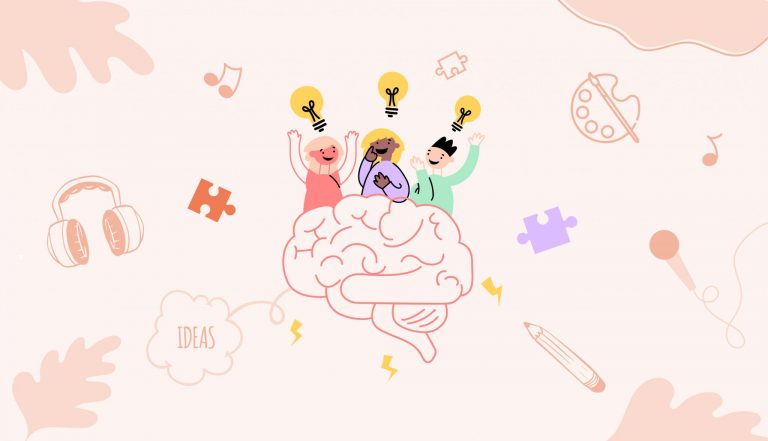“Fogged brain, longing for clarity; time passes by, making every thought a faded memory.”
Have you ever been in a situation where your mind went blank, and you couldn’t think of a thing? Most of us face similar situations when we are stressed or surrounded by challenging situations that don’t let us think straight.
You might try hard to find the best solutions to cope with the situation but end up hitting a dead end.
If this describes you, then it is essential for you to understand neuroplasticity and how you can enhance it.
Introduction
Did you know that your brain has the ability to evolve beyond its extent and adapt to any new situation?
Well, it’s true! You can think of it as a dynamic landscape that can adapt to anything, learn from experiences, and even recover from injuries. This incredible ability of your brain is known as neuroplasticity.
Neuroplasticity enhances the capacity of your brain to recognize itself by forming neural connections throughout life. Suppose you want to boost your cognitive function, recover from any traumatic event, or simply enhance your mental health. In that case, it is important to understand and utilize neuroplasticity’s power to transform your life positively.
👉 Pro Tip:
Your brain is like a muscle; the more you challenge it, the stronger it becomes. Start today by doing something out of your routine—like brushing your teeth with your non-dominant hand.
What is Neuroplasticity?
Now, when we talk about neuroplasticity, it is not just a simple word but has a deeper meaning. It doesn’t get wrapped up in just the brain’s ability to change and adapt to new responses; it has more to it. It includes the ability to adapt sensory experiences, the development of the brain, and respond to damage or dysfunction.
Unlike any other static organ in your body, the brain is a flexible and evolving system that can rewire itself in response to learning and experience. This is how proficient your brain is and can lay a foundation to build a memory and learning, allowing you to acquire new skills. You can increase the plasticity of your brain with your habits, environmental changes, and behaviors.
Neuroplasticity is not only about growth but also about the capacity of your brain to cut off unnecessary connections and make your life more efficient.
🎭 Fun Fact
Did you know that your brain has the capacity to store around 2.5 petabytes of information? That’s the equivalent of about 3 million hours of TV shows!
The Science Behind Neuroplasticity
Neuroplasticity itself is a scientific term that refers to rewiring your brain. If we go deep into the cellular level, synaptogenesis, which is the formation of new synaptic connections and neurogenesis, is involved. It is linked to creating new neurons, particularly in the hippocampus.
Multiple factors, such as physical exercises, emotional states, and mental stimulations, affect the process of generating new neurons. It is evident that the plasticity of your brain can also help you recover from injuries.
Taking the example of stroke, sometimes, areas of your brain can take over the functions of damaged regions, showing the extraordinary capability of your brain.
Studies have shown that approximately 20% of people have experienced significant changes in their brains due to neuroplasticity interventions, such as cognitive therapy or mindfulness practices.
Quick Question:
What scientific discovery about the brain has surprised you the most?
Neuroplasticity and The Transformation of Your Life
Do you know that the lifestyle you choose has an intense impact on your brain’s plasticity?
If you practice physical exercises regularly, particularly aerobic activities, they significantly enhance your neurogenesis, which helps improve your memory and cognitive function.
Another thing that plays a crucial role in promoting brain health and neural growth is a diet that consists of nutrients like omega-3 fatty acids, flavonoids, and antioxidants. Also, stress management plays an important role, contributing to an increase in neuroplasticity. Chronic stress leads to the release of cortisol (hormones, which shrink the hippocampus, a region of the brain that controls memory and learning Lupien et al., 1998).
🎭 Fun Fact |
You can practice stress management techniques such as meditation, yoga, and deep breathing to reduce your stress level and enhance the plasticity of your brain.
According to a study, people who are involved in regular physical activities have a 30% higher rate of neuroplasticity than those with sedentary lifestyles.
Social Connections and Neuroplasticity
We are all social creatures by inheritance, and our brains are set to work and thrive on social networks. Having social connections makes it easy to increase neuroplasticity by exposing our brains to new experiences, emotional attachments, and different perspectives. New neural pathways are formed every time you have an engaging and meaningful conversation with someone, which nurtures your relationships and builds strong connections between you both.
Maintaining social connections not only helps you reduce stress but also increases your brain’s plasticity. On the other hand, when you are lonely and keep your distance from others, it directly impacts the reduction of neuroplasticity.
Having a sense of belonging and connection with others enriches your life and strengthens your brain’s ability to adapt and grow.
👉 Pro Tip:
Engage in meaningful conversations regularly. It not only strengthens social bonds but also enhances your brain’s ability to form new neural connections.
Neuroplasticity-Enhancing Practices to Empower Your Brain
It is essential to enhance the neuroplasticity of your brain to adapt to challenging situations and increase your brain’s learning capacity. Here are some of the effective practices that will help you boost your neuroplasticity:
- Engage Your Brain
One of the best techniques for rewiring your brain is constantly challenging your mind with activities like learning a new language, playing an instrument to enhance your brain’s activity, or solving puzzles to increase its plasticity. These activities stimulate your brain’s connections and help it grow.
- Stay Physically Active
Staying physically active strengthens your brain’s activity and progress. You can practice exercises that require coordination and balance, such as martial arts or dancing, which can help enhance the adaptability of your brain.
- Practice Mindfulness
If you incorporate mindfulness practices in your daily life, it will help you boost your focus, emotional control, and overall brain function. You can start by practicing meditation and deep breathing techniques to boost your mental abilities.
- Mix Up Your Routine
Another great way to enhance your neuroplasticity is to introduce new experiences regularly and keep your brain engaged with several activities. This practice will help you with creating new neural pathways.
- Socialize
It is important to maintain a strong social connection to create meaningful interactions with other people and increase community involvement. It will help your brain to enhance plasticity and reduce cognitive decline.
- Prioritize Sleep
You must prioritize your sleep and have enough good night’s sleep to ensure your mental well-being. Having quality sleep enhances your learning abilities and makes your brain more focused (Walker and Stickgold, 2004).
Scientific Support: Studies show that just eight weeks of mindfulness meditation can increase gray matter in the brain’s hippocampus, underscoring the importance of these practices in enhancing neuroplasticity. (Holzel et al., 2011)
Quick Question:
Which neuroplasticity-enhancing practice will you incorporate into your daily routine today?
Conclusion
The brain is known as the extraordinary part of the human body, which can develop adaptation abilities beyond its limits. It is capable of growing continuously through neuroplasticity.
Once you are able to understand the factors that influence neuroplasticity and involve daily practices to boost your brain, you can free the path for your mind to adapt to new challenges, learn things, and thrive throughout your life.
You can help your brain reach its fullest potential through several external factors, such as using mindfulness practices, physical exercises, maintaining social connections, or taking care of your physical and mental health.
You can help your brain grow more with continuous efforts and patience and embrace this journey of transformation to experience the deep impact it can have on your mental and emotional well-being.
🎭 Activity:
Reflection Journal – Write a short reflection on how you plan to integrate neuroplasticity practices into your daily routine.
“Mind never so clear, like a water flowing through mountains, always longing for more, carving its path to the endless shore,”
Sources
- Penn Arts & Sciences, The University of Pennsylvania: How the Wiring of Our Brain Shapes Who We Are
- IBE – UNESCO, Switzerland: Neuroplasticity: How the brain changes with learning
- National Association of Biology Teachers, VA: “REWIRING” THE BRAIN
References
- Mindfulness and Brain Structure: Mindfulness meditation increases gray matter density in the hippocampus, enhancing learning and memory (Holzel et al., 2011).
- Chronic Stress and Neuroplasticity: Chronic stress reduces hippocampal size, impairing memory. High cortisol levels are linked to decreased hippocampal volume(Lupien et al., 1998).
- Sleep and Memory Consolidation: Sleep is essential for memory consolidation. Those who slept after learning a task performed better than those who were sleep-deprived (Walker and Stickgold, 2004).





















